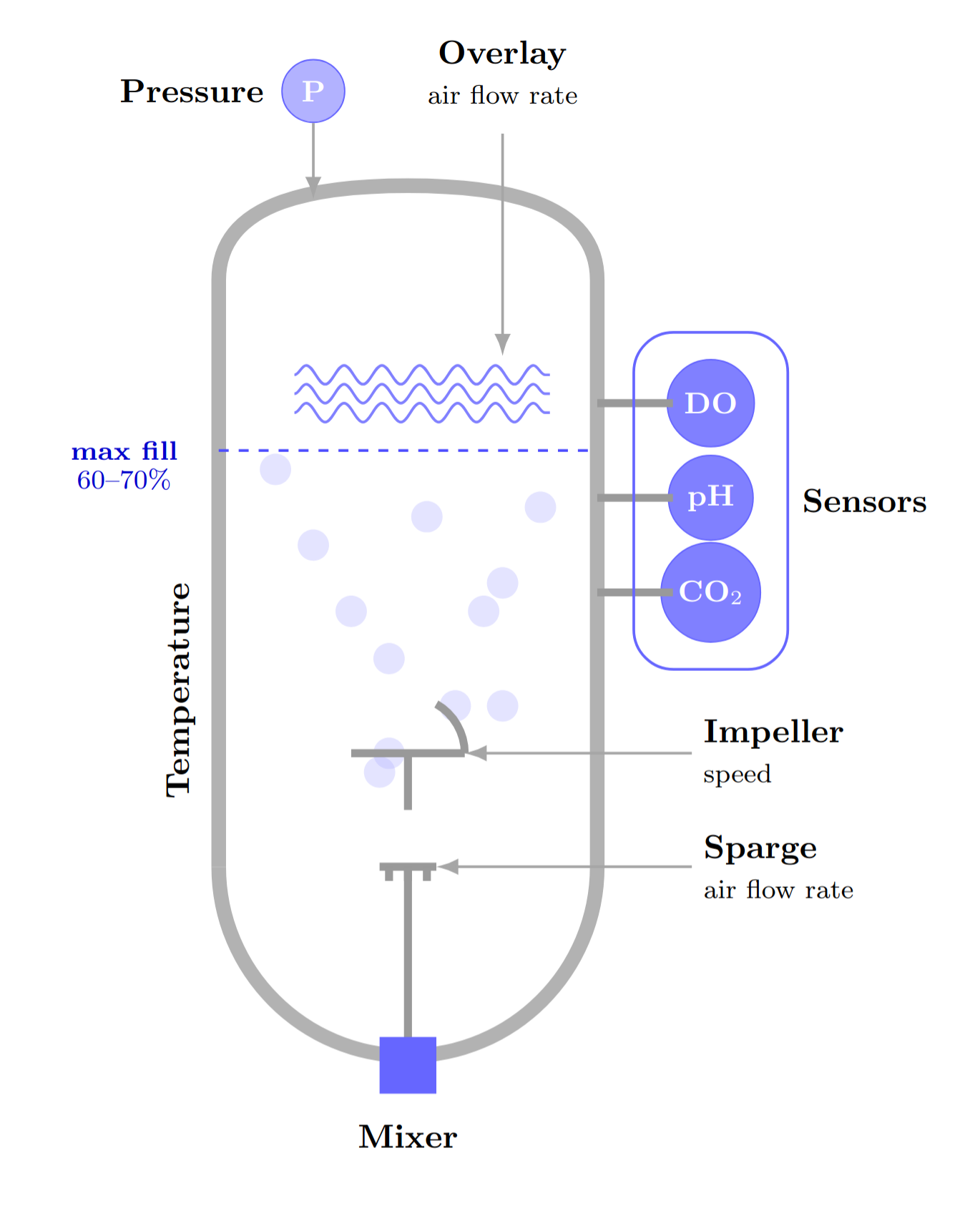Asynchronous Bioreactor Optimization
🚀 Async Python Fundamentals for Continuous Bioreactor Optimization
When optimizing continuous bioreactors you deal with streams of sensor data (pH, oxygen levels, glucose), predictive models and dynamical control of pumps or nutrient feeds.
Somehow you need to juggle these tasks. This is where Python’s asyncio comes in handy: it lets your application do many things at once without freezing or slowing down.
🎯 Why Does This Matter in Bioreactor Control?
- Your app streams sensor data continuously — waiting on these shouldn’t freeze your dashboard or ML prediction pipeline.
- Predictive models run in the background, adjusting feed rates or oxygenation without delays.
- Your web dashboard updates live with no lag, keeping scientists informed and in control.
- Async programming ensures your app can handle multiple tasks concurrently, without spinning up threads or processes.
How exactly does this work? Let’s draft a high-level example of a bioreactor control system.
🔍 Async Continuous Bioreactor Optimization
import asyncio
async def read_sensors(queue):
while True:
await queue.put(sensor_data) # Non-blocking
def predict_model(data):
# This is a blocking, CPU-bound operation (e.g., NumPy or PyTorch)
result = heavy_ml_model.predict(data)
return result
async def compute_control(data):
result = control_model(data) # blocking
return result
async def run_prediction(queue, control_queue):
"""Consume sensor data, run prediction, and send control updates."""
while True:
sensor_data = await queue.get() # Wait for sensor data, non-blocking
prediction = await asyncio.to_thread(predict_model, data) # Run prediction in a separate thread, non-blocking
await predict_queue.put(prediction) # Pass prediciton to control system
queue.task_done() # Mark sensor data processed
async def update_control(control_queue):
"""Consume predictions and adjust bioreactor control parameters."""
while True:
prediction = await control_queue.get() # Wait for prediction, Non-blocking
control_action = await asyncio.to_thread(compute_control, prediction) # Run control update in a separate thread
log(f"Control updated: {control_action}")
control_queue.task_done()
async def main():
sensor_queue = asyncio.Queue()
control_queue = asyncio.Queue()
# Start concurrent tasks
sensor_task = asyncio.create_task(read_sensors(sensor_queue))
prediction_task = asyncio.create_task(run_prediction(sensor_queue, control_queue))
control_task = asyncio.create_task(update_control(control_queue))
log("Bioreactor control system running...")
# Run forever (or until externally stopped)
await asyncio.gather(sensor_task, prediction_task, control_task)
if __name__ == "__main__":
asyncio.run(main())🧠 What’s Going On? Why Blocking Matters
Async programming is all about yielding control to allow other tasks to run.
In the example above, we have three main tasks: 1. Reading sensors: This is a non-blocking operation. It continuously reads sensor data and puts it into a queue. 2. Running predictions: This is a blocking operation. It runs a heavy ML model to predict control parameters based on sensor data. 3. Updating control parameters: This is also a blocking operation. It computes control actions based on predictions.
The key is to avoid blocking the event loop with heavy computations. Instead, we use asyncio.to_thread() to run blocking functions in a separate thread, allowing the event loop to continue processing other tasks.
This table summarizes the blocking and non-blocking nature of various components in the code:
| Step | Blocking or Non-blocking? | Why? |
|---|---|---|
while True |
Non-blocking | This creates an infinite loop that runs concurrently with other tasks without blocking. |
async def |
Non-blocking | This defines an asynchronous function that can be run concurrently with other tasks. |
await |
Non-blocking | This yields control back to the event loop, allowing other tasks to run concurrently. |
asyncio |
Non-blocking | This is the main library for asynchronous programming in Python, allowing for concurrent execution. |
read_sensors |
Non-blocking (await queue.put(...)) |
Waiting for sensor data should not block other tasks. |
predict_model |
Blocking (CPU-bound) | This is a heavy computation that will block the event loop if not run in a separate thread. |
compute_control |
Blocking (CPU-bound) | Similar to predict_model, this is a heavy computation that should not block the event loop. |
run_prediction |
Non-blocking (await queue.get(...)) |
Waiting for sensor data should not block other tasks. |
update_control |
Non-blocking (await control_queue.get(...)) |
Waiting for predictions should not block other tasks. |
asyncio.to_thread(...) |
Non-blocking | This runs a blocking function in a separate thread, allowing the event loop to continue. |
asyncio.gather(...) |
Non-blocking | This allows multiple tasks to run concurrently without blocking each other. |
asyncio.run(...) |
Non-blocking | This starts the event loop and runs the main function, allowing for concurrent execution. |
asyncio.Queue() |
Non-blocking | This is a thread-safe queue that allows for non-blocking communication between tasks. |
task_done() |
Non-blocking | This marks a task as done without blocking the event loop. |
create_task(...) |
Non-blocking | This creates a new task that runs concurrently with other tasks without blocking. |
log(...) |
Non-blocking | Logging is typically non-blocking, but can be made blocking if necessary. |
⚙️ Summary: Async Is About Scheduling, Not Just Speed
asyncio lets your bioreactor system juggle multiple I/O-bound tasks smoothly:
- Reading sensors
- Sending data to models
- Updating control parameters
- Serving dashboards
…all without blocking each other.
By carefully choosing where to block (quick operations) and where to yield control (await), your biotech software becomes more efficient and responsive.
